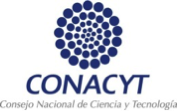Decay of silk embroidery treads: morphological, color and mechanical strength changes
DOI:
https://doi.org/10.30763/Intervencion.2012.6.71Keywords:
Silk, decay, color change, tensile strength, surface morphology, SEMAbstract
Silk threads used for embroidery undergo different effects of decay due to the absence of twist and textile weave, characteristics which are added to those that result from silk’s sensitivity to environmental factors. In order to understand the deterioration of these types of threads, actual samples of 19th century embroideries from the Franz Mayer Museum collection were analyzed and compared to the changes observed in experimental samples artificially aged by means of controlled uv radiation. The assessment was done via mechanical testing to verify changes in tensile strength, colorimetry to record color changes, and Scanning Electron Microscope (sem) to assess the fiber´s surface morphology changes.
Downloads
References
Becker, Mary M. y Noreen Tuross
“Initial degradative changes found in Bombyx mori silk fibroin”, en David Kaplan, W. Wade, Berry Farmer y Christopher Viney (eds.), Silk Polymers: Materials Science and Biotechnology, Washington D.C., American Chemical Society, 252-269.
Brill, Thomas B.
Light. Its Interaction with Art and Antiquities, Londres, Kluwer Academic Publishers.
Canadian Conservation Institute (CCI)
CCI Notes 13/11. Natural Fibres, Ottawa, Canadian Heritage.
Contreras Vargas, Jannen
“Evaluación de dos productos de quitina para el refuerzo de hilos de bordado de seda”, tesis de licenciatura en restauración de bienes muebles, México, ENCRyM-INAH.
Crighton, J. S.
“Silk: A study of its degradation and conservation”, en Norman H. Tennent (ed.), Conservation Science in the UK, Preprints of the Meeting in Glasgow, May 1993, Glasgow, James and James, 96-98.
Kaplan, David, W. Wade Adams, Barry Farmer y Chistopher Viney
“Silk: Biology, structure, properties and genetics”, en D. Kaplan, W. W. Adams, B. Farmer y C. Viney (eds.), Silk Polymers: Materials Science and Biotechnology, Washington D.C., ACS Publications, 2-16.
Leene E. Jentina
Artificial Ageing of Yarns in Presence as Well as in Absence of Light and Under Different Atmospheric Conditions, segundo reporte interino, Bruselas, Committee of icom for Museum Laboratories, s/f.
Miller, Janet E. y Barbara M. Reagan
“Degradation in weighted and unweighted historic
silks”, Journal of the American Institute for Conservation
(28) 2:97-115, documento electrónico disponible en
[http://aic.stanford.edu/jaic/articles/jaic28-02-004_1.html], consultado en febrero de 2012.
Matthews J. Merritt
Textile Fibers, Londres, John Wiley & Sons.
Mikolaychuk, Elena y Nina Pinyagina
“Silk as a textile material, reasons of destruction”, en
stf Jubilee Conference: Silk. Different Aspects, Estocolmo,
Urram, s/f.
Tímár-Balázsy, Agnes y Dinah Eastop
Chemical Principles of Textile Conservation, Londres,
Butterworth-Heinemann.
Wyeth, Paul, Susanne Greiff, Harmut Kutzke, Sophia Lahlil y Christian Riekel
“Surveying silk fibre degradation by crystallinity determination: A study on the Tang-Dynasty silk treasure from Famen temple, China”, en Paul Wyeth y Rob Janaway, (eds.), Scientific Analysis of Ancient and Historic Textiles: Informing Preservation, Display and Interpretation, Londres, Archetype, 38-43.
Yong-Woo, Lee
Silk Reeling and Testing Manual, fao Agricultural Services Bulletin, 136, documento electrónico disponible en
[http://www.fao.org/docrep/x2099e/x2099e08.htm], consultado en febrero del 2012.
Additional Files
Published
How to Cite
Issue
Section
License
Copyright (c) 2014 Intervención, Revista Internacional de Conservación, Restauración y Museología

This work is licensed under a Creative Commons Attribution-NonCommercial 4.0 International License.

Atribución-NoComercial 4.0 Internacional
https://creativecommons.org/licenses/by-nc/4.0/deed.es
Usted es libre de:
- Compartir — copiar y redistribuir el material en cualquier medio o formato
- Adaptar — remezclar, transformar y construir a partir del material
Bajo los siguientes términos:
-
Atribución — Usted debe dar crédito de manera adecuada, brindar un enlace a la licencia, e indicar si se han realizado cambios. Puede hacerlo en cualquier forma razonable, pero no de forma tal que sugiera que usted o su uso tienen el apoyo de la licenciante.
-
No Comercial — Usted no puede hacer uso del material con propósitos comerciales.




















